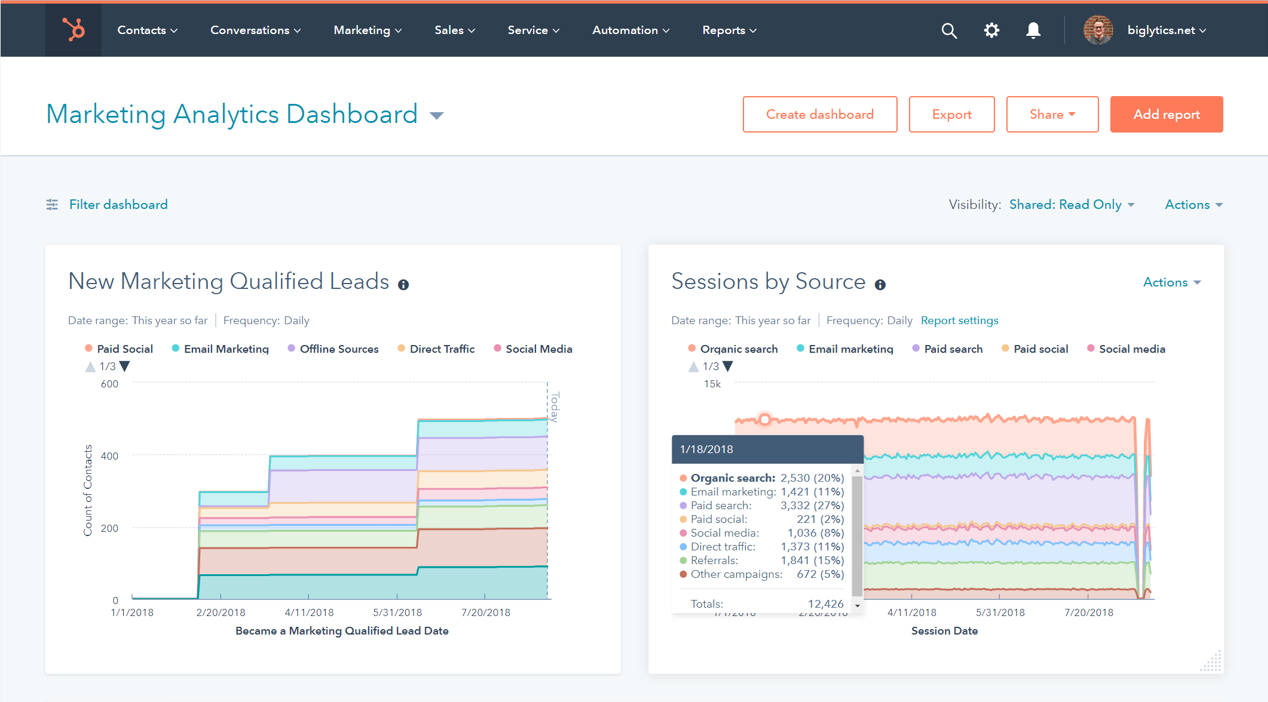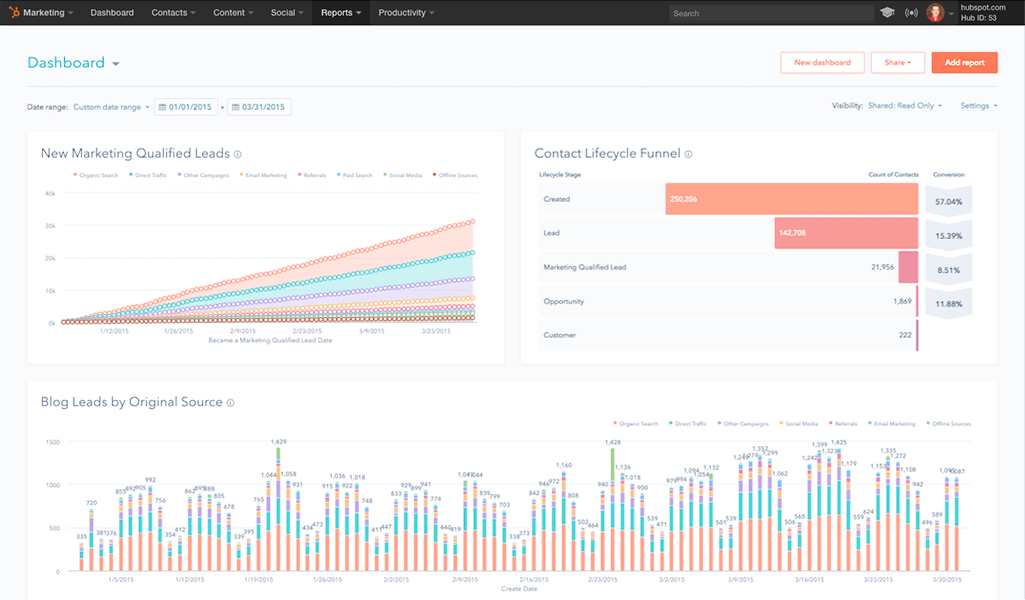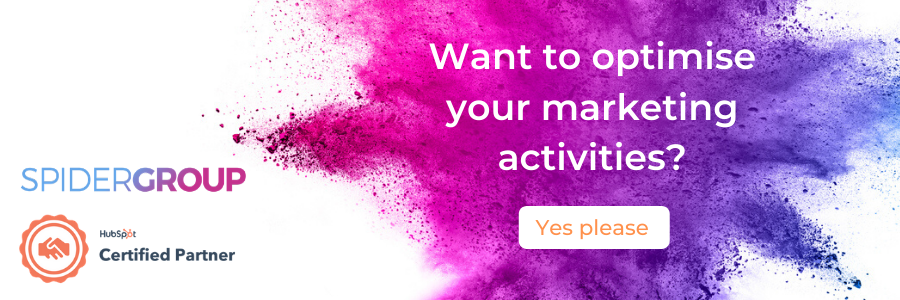Is all that time on Twitter worthwhile, how much more time do we need to spend on SEO, why are we creating so many blog posts?
Marketing Directors and marketing teams everywhere know the struggle of proving ROI for their activities.
A lot of businesses look at vanity metrics to measure whether or not that kind of activity is working. Traffic, new followers, likes, and retweets are all reported measures of success. But are they really?
When it comes down to it, what matters is the bottom line. Do those activities contribute to money in the bank? You could have a million followers, but if nothing on that platform ever leads to a sale, what’s the point?
The difficulty is often in knowing whether or not that activity did lead to (or contribute to) a sale. And whether or not that activity generated more revenue than an alternative.
Measuring marketing ROI can be tricky. Especially when you’ve got a whole lot of different activities going on. How much better would it be if you knew that spending £1 on a specific activity would net you £5 in return?
How it often happens
A business needs to do email marketing, so we get something like MailChimp to help. Everyone expects us to have a social media presence, so we get Twitter, Facebook, Linkedin, and we sign up to something like Buffer or Hootsuite to make that a little more manageable.
We then start to get interested in landing pages, to increase the number of conversions we get from our websites, so something like Unbounce comes in to help manage that.
And, of course, we need a CRM system to keep track of those leads we’re generating.
The difficulty with all of this is that assessing ROI for digital marketing is a huge challenge. And when we have all these disparate systems, just getting the information together is a headache, let alone trying to work out what it boils down to.
I might see from our social media stats that we’ve got more followers than last month, we had more impressions from our tweets, and our website traffic is going up, but it’s difficult to see which marketing efforts are the most effective, especially when what I care about is the bottom line.

An integrated approach
This is why we’re big fans of HubSpot. From a marketing perspective, I only have to log into one system, which makes my life a lot easier. I have all my emails, landing pages, and social media profiles at my fingertips, without bouncing from one platform to another.
More importantly, from a business perspective, it tells us what outcomes we’re getting from marketing.
We can see where activity turns into leads and where those leads turn into customers.
Instead of marketing being that department that can’t really quantify its activity, we can generate tangible information that says our ROI for social media is X%, while it’s three times higher for email marketing.
If I want to invest more time or money into marketing, I know exactly where that money should go to get the best return.
Because everything is underpinned by a CRM system – which is free, by the way – we can track someone throughout their engagement with our website and marketing.
Instead of getting bits and pieces of information from all the different systems we could use, I have a complete view of the marketing funnel and customer journey.
Data gathering through the journey
Let’s say we wrote an ebook. We built a landing page in HubSpot to promote it. And then we used the social media tool to share the link to that page across our accounts.
Sales Manager Mary clicked the link and downloaded the ebook, so now she’s in our CRM, and she signed up to our mailing list.
We can see that the landing page she visited has a much higher conversion rate than another landing page without a download. So, we know that we need to put some effort into creating more ebooks and downloadable content.
We can also see that, while traffic has come in from all social platforms, all the leads are coming from links we’ve shared on LinkedIn.
Forget vanity metrics like how many impressions or likes a social post has, we know which impressions and clicks actually have value, and therefore which platforms are generating real leads.
And we can see how many of those leads convert into clients.
Because everything is integrated, we know exactly what activities are having an impact on the bottom line. We know that a combination of emails and blog posts are effective. We can see that clients who found us through organic search looked at more pages than those who came through social media, so we know we need to make the journey through our website as customer-focused as possible.

Adding value to sales
We can go back into the contact record for Mary and see that after she downloaded the ebook, she also opened the next marketing email we sent her, then she went back to our website to look around – we can see what pages and blog posts she looked at. We can even see how many times a particular email was opened.
Our sales team can also see all of this, because the sales platform is just as integrated with the CRM as the marketing side is. So, when they’re prospecting, they can see that this specific individual has consumed a whole lot of content about, say, inbound marketing.
They can get in touch with Mary and share more content – another ebook that we’ve produced, or some supplementary blog posts – or offer her a demo of our marketing services. They can talk authoritatively about the topic she’s specifically interested in.
They have great insights to help close a sale. And we can see all of the touchpoints that contributed to Mary becoming a client.
All of which means we can work out the ROI of each activity, identify how many touches it takes for a conversion, and what contributes to a successful sale.
Making a difference
Marketing is a great, creative endeavour. But all businesses need to know what works.
We might have great fun creating infographics and social media images, but if they have no effect, they’re a waste of limited marketing time and budget.
The difficulty is always in knowing whether individual activities do have an effect or not. Now we know.

We started working with HubSpot because we knew it would help streamline and improve our marketing. We didn’t realise at the beginning just how much power it gave us to optimise and prioritise, and validate our marketing efforts.
Once we know that putting £1 into a certain activity brings in £5 in return, what’s to stop us putting £10,000 or £100,000 into it?
Because we can see what’s working, how well it’s working, and what kind of return it’s generating, it becomes a simple decision to start scaling up.


